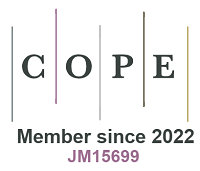A solvent-free gadolinium-based nanofluid and its application in toughening and strengthening epoxy composites
Abstract
Epoxy resin (EP) finds widespread use across numerous sectors due to its superior bonding properties, thermal stability, stiffness, and strength. Nevertheless, its limited toughness after curing has hindered broader implementation. Addressing this limitation, we developed novel solvent-free gadolinium-based nanofluid (Gd-NF) incorporating gadolinium oxide (Gd2O3) cores through covalent bonding strategies. This innovation effectively overcomes the agglomeration tendency of traditional Gd2O3 particles within resin matrix while simultaneously improving EP mechanical characteristics. The synthesized Gd-NF demonstrates fluid-like properties at ambient temperature. Furthermore, surface modification of Gd2O3 with specialized canopy molecules confers exceptional stability and dispersion capabilities to Gd-NF, rendering it an ideal functional additive for EP enhancement. Comparative analysis reveals that the 20% Gd-NF/BPF/EP composite exhibit tensile strength increases from 5.352 to 19.704 MPa, representing a 3.68-fold enhancement. Concurrently, impact resistance improved from 0.853 to 1.834 kJ/m2. These findings highlight Gd-NF's significant potential as both a toughening and reinforcing agent for EP systems, facilitating expanded utilization across diverse applications.
Keywords
Gadolinium oxide, solvent-free nanofluid, epoxy composites, toughening and strengthening
Cite This Article
He L, Wang Y, Zhang G, Zhao W, Su C, Li P, Zhang L, Liu X. A solvent-free gadolinium-based nanofluid and its application in toughening and strengthening epoxy composites. Chem Synth 2025;5:[Accept]. http://dx.doi.org/10.20517/cs.2025.73












